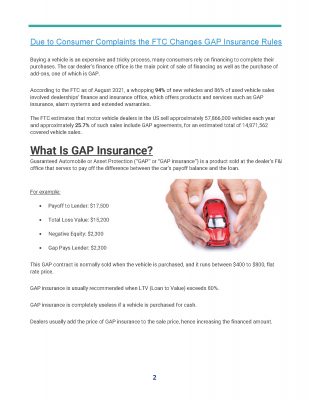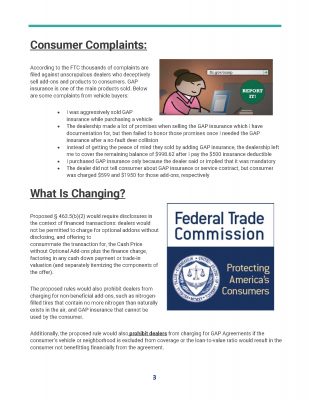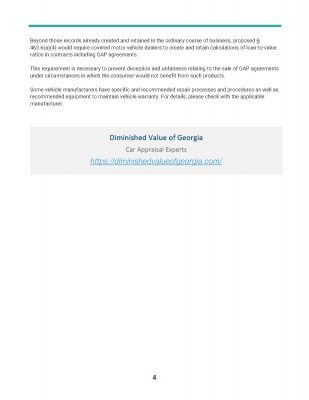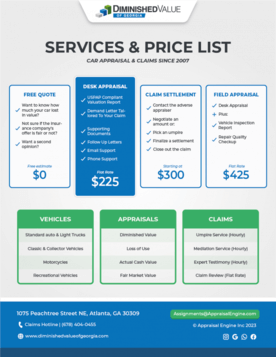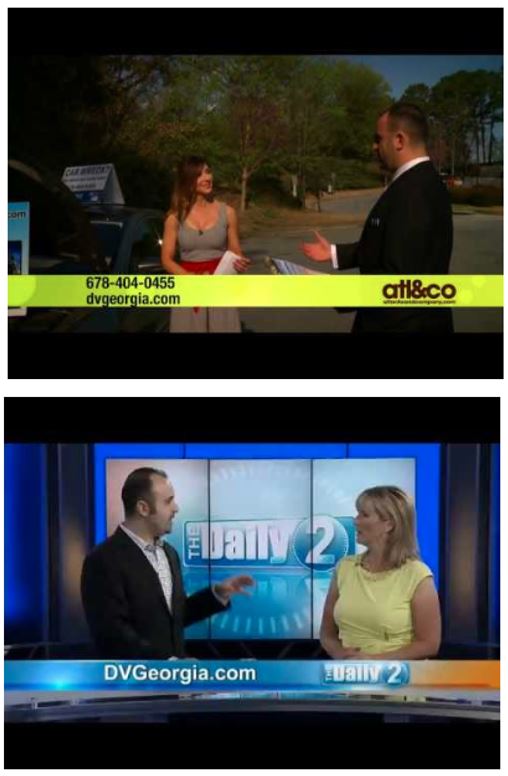Due to Consumer Complaints the FTC Changes GAP Insurance Rules
FTC Rule 463 Section 5 GAP Insurance (PDF)
Buying a vehicle is an expensive and tricky process, many consumers rely on financing to complete their purchases. The car dealer’s finance office is the main point of sale of financing as well as the purchase of add-ons, one of which is GAP.
According to the FTC as of August 2021, a whopping 94% of new vehicles and 86% of used vehicle sales involved dealerships’ finance and insurance office, which offers products and services such as GAP insurance, alarm systems and extended warranties.
The FTC estimates that motor vehicle dealers in the US sell approximately 57,866,000 vehicles each year and approximately 25.7% of such sales include GAP agreements, for an estimated total of 14,871,562 covered vehicle sales.
What Is GAP Insurance?
Guaranteed Automobile or Asset Protection (‘‘GAP’’ or ‘‘GAP insurance’’) is a product sold at the dealer’s F&I office that serves to pay off the difference between the car’s payoff balance and the loan.
For example:
Payoff to Lender: $17,500
Total Loss Value: $15,200
Negative Equity: $2,300
Gap Pays Lender: $2,300
This GAP contract is normally sold when the vehicle is purchased, and it runs between $400 to $800, flat rate price.
GAP insurance is usually recommended when LTV (Loan to Value) exceeds 80%.
GAP insurance is completely useless if a vehicle is purchased for cash.
Dealers usually add the price of GAP insurance to the sale price, hence increasing the financed amount.
Consumer Complaints:
According to the FTC thousands of complaints are filed against unscrupulous dealers who deceptively sell add-ons and products to consumers. GAP insurance is one of the main products sold. Below are some complaints from vehicle buyers:
- I was aggressively sold GAP insurance while purchasing a vehicle
- The dealership made a lot of promises when selling the GAP insurance which I have documentation for, but then failed to honor those promises once I needed the GAP insurance after a no-fault deer collision
- Instead of getting the peace of mind they sold by adding GAP insurance, the dealership left me to cover the remaining balance of $998.62 after I pay the $500 insurance deductible
- I purchased GAP insurance only because the dealer said or implied that it was mandatory
- The dealer did not tell consumer about GAP insurance or service contract, but consumer was charged $599 and $1950 for those add-ons, respectively
What Is Changing?
Proposed § 463.5(b)(2) would require disclosures in the context of financed transactions: dealers would not be permitted to charge for optional addons without disclosing, and offering to
consummate the transaction for, the Cash Price without Optional Add-ons plus the finance charge, factoring in any cash down payment or trade-in valuation (and separately itemizing the components of the offer). The proposed rules would also prohibit dealers from charging for non-beneficial add-ons, such as nitrogen-filled tires that contain no more nitrogen than
naturally exists in the air, and GAP insurance that cannot be used by the consumer.
Additionally, the proposed rule would also prohibit dealers from charging for GAP Agreements if the consumer’s vehicle or neighborhood is excluded from coverage or the loan-to-value ratio would result in the consumer not benefitting financially from the agreement.
Beyond those records already created and retained in the ordinary course of business, proposed § 463.6(a)(4) would require covered motor vehicle dealers to create and retain calculations of loan-to-value ratios in contracts including GAP agreements. This requirement is necessary to prevent deception and unfairness relating to the sale of GAP agreements under circumstances in
which the consumer would not benefit from such products.



